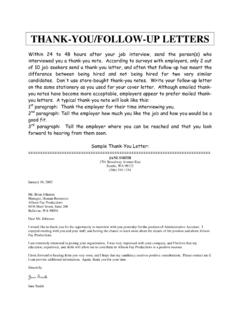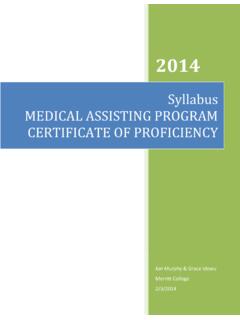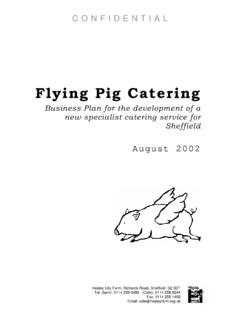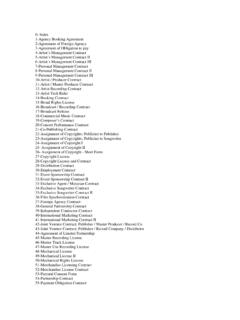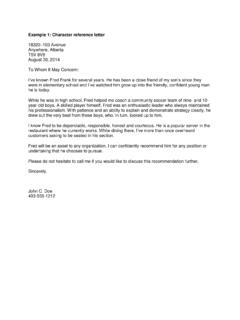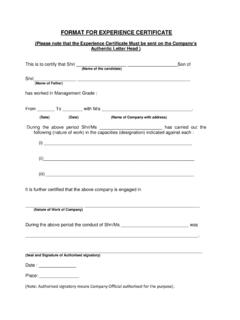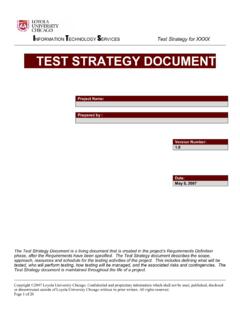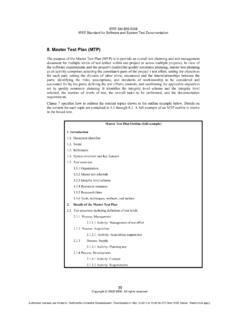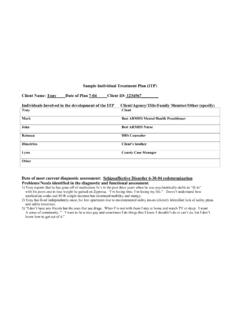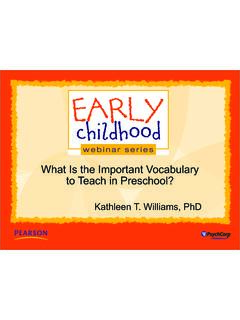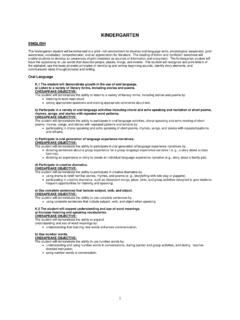Transcription of ELEMENTARY SCHOOL LIBRARY LESSON PLAN
1 Hanover County Public Schools Ashland, Virginia ELEMENTARY SCHOOL LIBRARY LESSON PLAN # National The student who is information literate accesses information Literacy efficiently and effectively by recognizing the need for information. Standard (E) The student will continue to expand and use listening and Virginia speaking vocabularies. FIRST. SOL (E) The student will use simple reference materials. A) use knowledge of alphabetical order by first letter . The student will recognize the importance of the alphabet to the LIBRARY LIBRARY .
2 The student will identify that fiction books in the LIBRARY are Objective in alphabetical order by the author's last name. Title The alphabet and the LIBRARY . Old Black Fly (Aylesworth), Amazing Aunt Agatha (Samton) other Resources alphabet books Introduce LESSON by letting students find letters of the alphabet in the Introduction room, or by reciting the alphabet with them. Vocabulary Alphabetical order, author's last name, spine label Read an alphabet story. Ask students what kind of order the story was in (alphabetical, ABC).
3 Ask students what else is in alphabetical order (the phone book, their names on the roll, etc.). Explain that the books on the shelf in the picture section are in alphabetical order, too. Include they are in order by the author's last name, not the book title. Why? (in case there are two books with the same title, or you're not sure of the exact title) Explain that alphabetical order makes it easier to find the book- it is always in the same place. Tie into last week's LESSON on books having a particular address . Activity Share another alphabet story, emphasizing the order and comparing it to the shelves.
4 (You may even want to walk around the LIBRARY and point to the areas as you get to that letter .). Have students line up in alphabetical order by their last name, pretending to Closure be books on a shelf. Comments: Created by the Hanover County Public Schools ELEMENTARY SCHOOL LIBRARY Media Specialists (Ashland, Virginia). Hanover County Public Schools Ashland, Virginia ELEMENTARY SCHOOL LIBRARY LESSON PLAN # National The student who is information literate accesses information Literacy efficiently and effectively by recognizing the need for Standard Virginia (E) The student will use simple reference materials.
5 A) Use knowledge SOL of alphabetical order by first letter . FIRST. Students will identify that books in the LIBRARY are in alphabetical LIBRARY order. Objective Students will locate fiction books in the LIBRARY using the call number. Title LIBRARY Detectives The ABC Mystery (Cushman). Resources Aunt Eater Loves a Mystery (Cushman). Index cards with call number on them Introduce LESSON by sharing a mystery book. Introduction Vocabulary Spine label, call number/ address , detective, clues Review that books in the LIBRARY are in alphabetical order.
6 But how do you find the book you want? Read a mystery story. Explain that in order to find books on the shelf, you must be a book detective . and use the clues to find it. Tell students the name of a book that you wish to find. (Use a book in your collection) List the clues: title and author. Now say that you need to find the book using those clues. Explain that you will use the author's name to figure Activity our where it is, looking for the book's call number / address on the spine label. (You may need to review call number/ address from the Jolly Postman.)
7 LESSON .). After finding the book, you may want to share part of it/ read it with students. Give students cards with fiction call numbers on them and have them find Closure the matching shelf. Comments: Created by the Hanover County Public Schools ELEMENTARY SCHOOL LIBRARY Media Specialists (Ashland, Virginia). Hanover County Public Schools Ashland, Virginia ELEMENTARY SCHOOL LIBRARY LESSON PLAN # National The student who is information literate accesses information efficiently Literacy and effectively by recognizing that accurate and comprehensive information Standard is the basis for intelligent decision-making.
8 (SS) The student will describe the stories of American leaders and their contributions to our country, with emphasis on George Washington, Virginia Benjamin Franklin, Abraham Lincoln, and George Washington Carver. SOL (SS) The student will discuss the lives of people associated with Presidents' Day, Columbus Day, and the events of Independence Day (Fourth of July). FIRST. Students will learn about President's Day. Students will listen for information about Abraham Lincoln. LIBRARY Students will learn about biographies. (92's).
9 Objective Students will sequence events in Abraham Lincoln's life. Students will develop patriotism and appreciation of history. Title President's Day/Abraham Lincoln . A Biography Picture Book of Abraham Lincoln by David Adler A United States atlas or a map of the United States Resources Pictures of Abraham Lincoln and George Washington Coins (a penny and a quarter). Biography books about Abraham Lincoln My Book about Abe Lincoln sequencing handout Introduction Brainstorm facts about Abraham Lincoln's life. Vocabulary President's Day, biography, sequence Discuss with the students why and when we celebrate President's Day.
10 Show pictures of Lincoln and Washington. Show Lincoln's picture on the penny and Washington's picture on the Activity quarter. Locate Lincoln's place of birth on a map. Read aloud A Biography Picture Book of Abraham Lincoln. Have students recall information you read about Lincoln from the book. Have students sequence events of Lincoln's life in a mini-book. Note: (May take 2 class periods). Use the mini-book to review three facts about Abraham Lincoln's life. Ask students Closure/. if they can recall any other facts about Abraham Lincoln.
